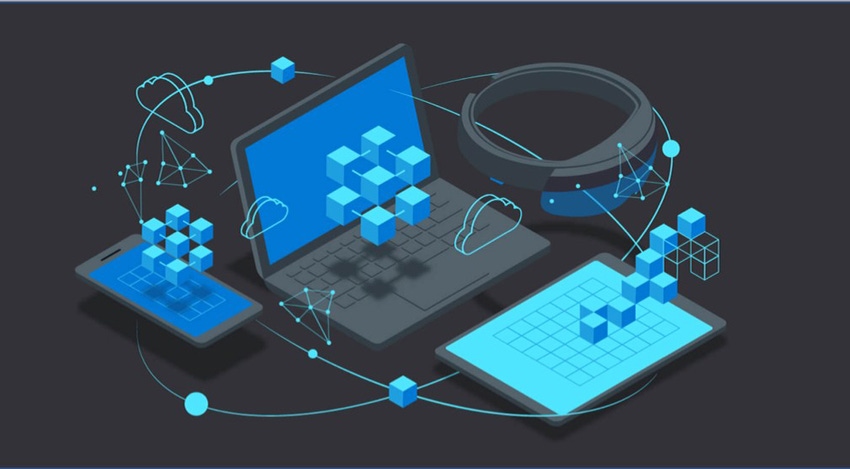Microsoft sets stage for annual Build developers conference with emphasis on intelligent cloud and edge.
May 6, 2019

When Microsoft first delivered Plug and Play (PnP) a generation ago, it was all about letting Windows users automatically connect components and peripherals to their PCs without installing extra drivers.
It was an important advance back in the 1990s, although it wasn’t seamless from the outset. But that’s what Microsoft promises its new IoT Plug and Play, announced Thursday, will do to edge devices. The company describes IoT Plug and Play as a modelling language that is “open” and will provide “seamless” connectivity of edge devices to the cloud.
Microsoft’s IoT Plug and Play will be among a slew of new edge and “intelligent” cloud advances that the company showcases at its annual Build conference in Seattle, where 6,000 developers will gather. CEO Satya Nadella will kick off Build Monday with his vision and road map keynote, where he is expected to emphasize the “intelligent edge.”
Presuming IoT Plug and Play is as seamless as Microsoft claims, it can play an important role in the advance of IoT solutions. Eliminating the need to install software on every edge device will remove a key barrier for partners seeking to build and deploy repeatable IoT solutions for enterprises.

Microsoft’s Julia White
“With IoT Plug and Play, developers can connect IoT devices to the cloud, without having to write a single line of embedded code,” wrote Corporate Vice President for Microsoft Azure Julia White, in a blog post. “IoT Plug and Play also enables device manufactures to build smarter IoT devices that just work with the cloud.”
Several dozen devices are IoT Plug and Play-capable from partners including Compal, Delta, Kyicera, Sharp, Seeed and STMicroelectronics, according to Microsoft. Partners with specialized and vertical IoT platforms that are supporting it include Askey, Thundercomm and Via Technologies.
To help partners find IoT Plug and Play-certified devices, Microsoft also launched its new Azure Certified for IoT device catalog, which includes the first crop of devices including Askey’s Dashcam Smart Camera, Seeed Technology’s SenseCAP temperature and humidity sensors for agricultural and industrial environments and Sharp’s Windows Connected Display.

Microsoft’s Scott Guthrie
Eliminating the need for partners to write software for each connected and embedded device is critical for partners seeking to build IoT solutions that scale, wrote Scott Guthrie, Executive Vice President of Microsoft’s Cloud and Enterprise Group. “IoT Plug and Play provides developers with a faster way to build IoT devices and will provide customers with a large ecosystem of partner-certified devices that can work with any IoT solution,” Guthrie noted.
In addition to making it easier to plug device into the Microsoft cloud and its Azure IoT Hub platform, the company said it will add more intelligence to those endpoints with the preview Azure SQL Database Edge. Available in private preview…
…Azure SQL Database Edge is a containerized iteration of Azure SQL that runs in a small footprint on ARM and x64-based devices in both connected and offline environments.
The software is available in Docker, Kubernetes and Windows container environments and offers data streaming and time-series machine learning and graph capabilities for low-latency analytics. According to Microsoft’s White, partners can develop applications once with a common programming surface for Azure SQL Database, SQL Server on-premises and the new SQL Database Edge and will work with various business intelligence tools including PowerBI.
Expanding HoloLens
Also, at Build, Microsoft will showcase its HoloLens industrial grade mixed reality 3D headset. Microsoft has accelerated the HoloLens ecosystem over the past year with more than 20,000 developers working with its Mixed Reality Developer platform.
The company said it wants to triple the number of developers building for HoloLens in the coming 12 months and said it is expanding its Mixed Reality Developer Program to support that push with the launch of its HoloLens 2 Development Edition.
The new kit includes the HoloLens 2 headset, $500,000 in Azure credits for developers to build mixed reality prototypes and 3-month trials of real-time 3D development software from Unity Technolgies, specifically its Unity Pro and the Unity PiXYZ Plugin for Computer Aided Drawing (CAD) and Building Information Management (BIM).
AI Cognitive Services
While the new IoT and endpoint capabilities showcased at Build will extend Microsoft’s AI and machine learning to the edge, the company will also deliver new capabilities to its Azure Cognitive Services portfolio for knowledge workers.
Microsoft is adding a new category to Azure Cognitive Services called Decision, which will make recommendations to end users. It will include a new service called Personalizer, which uses what Microsoft describes as reinforcement learning.
Additional updates to Azure Cognitive Services include Ink Recognizer to read individual handwriting Form Recognizer for automating data entry by extracting text and other data from documents and a new transcription capability in the company’s Speech Service.
About the Author(s)
You May Also Like


